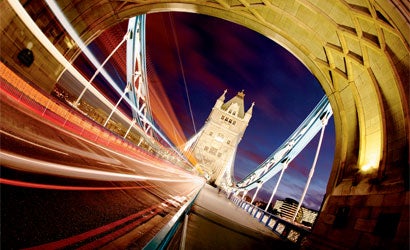How to Get Better Photos in Any Light
Day is done, gone the sun. Now take out your camera and start shooting.

The Basics
1. Put away that flash. Instead, buy a sturdy tripod. Urban photographers will want something easily portable; landscape shooters, something that resists potentially damaging effects of sand, saltwater, and muck. Make sure its legs are long enough to reach eye level. Next, invest in a remote shutter release to avoid jostling the camera.
2. Shoot manual. Handy in daylight, your lightmeter is often useless at night. Instead, carry an Exposure Value (EV) table in your camera bag. Fred Parker’s Ultimate Exposure computer is a quick guide to the EVs you’ll encounter after dark — and the corresponding apertures and shutter speeds to use. Bracket liberally.
3. Know white-balance presets. The Daylight preset is often good for candlelight; Tungsten can be best for mixed light. Presets not working? Set a custom white balance.
4. Lower your ISO. The grainy effect of digital noise can provide a gritty forensic feel that may work with some scenes. Often, though, noise drains a scene of nocturnal magic. Stick to ISO 800 (or lower) to control noise and improve color.
Beyond the basics?
For the finer details, we asked five photographers to tell us how they made their images. Click here to see their images and notes on how they did it.